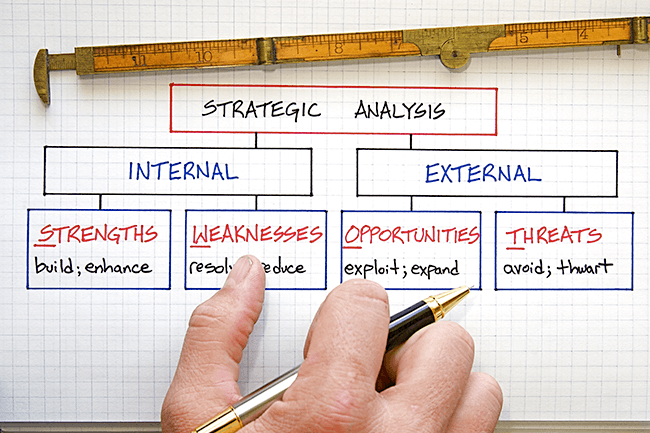Creative Ways To Use a Virtual Whiteboard at Work and the Benefits That Come With It

Visualization is often key to creating something great, especially in the workplace. And while using a chalkboard or markerboard can bring a certain sense of nostalgia, it simply isn’t practical in most modern settings.
But with as many as 80% of the population predisposed to visual learning methods, having a visual presentation is more of a necessity than an option.
Fortunately, technological advances have made it possible to modernize visual learning aids with virtual whiteboards and online workspaces.
Want to learn more about how a virtual whiteboard can benefit your team? Read on to find out how to best use this tool to present ideas in the workplace.
What is a Virtual Whiteboard?
Most people who grew up in the public school system have had the opportunity to use a traditional chalkboard or whiteboard. They are commonly found in academic spaces because of the hands-on learning opportunity they present.
Virtual whiteboards are based on the same concept, but they allow more people to collaborate simultaneously and enable people to review all the notes that were shared at a later time. Team members can write, draw, highlight, mark up documents, and use other note-taking features to illustrate their thoughts and ideas. Since the whiteboard is a shared space, no one has to worry about taking down their own notes and can focus more on the project at hand.
Another plus is that an online whiteboard allows for better strategic planning across hybrid and remote teams. When used properly, virtual whiteboard collaboration can be even more effective than an in-person brainstorming session.
Why Should I Use a Virtual Whiteboard?
Even in an in-office setting, visual collaboration improves the productivity of a team. People are able to understand images 60,000 times faster than they can understand text. This makes it one of the best methods of communication and collaboration.
Aside from being a more effective form of communication, it also allows people to stop worrying about notes and focus. Unlike traditional methods, online information isn’t at risk of being lost if it isn’t copied down straightaway.
If you have a hybrid or remote team, the value of a virtual whiteboard collaboration becomes even more apparent. It’s easy for teammates to stay on the same page during meetings. Plus, it allows for simple real-time explanations.
Main Benefits
Many people associate the usage of whiteboards with an academic or research setting, but there are also uses in a corporate setting.
The uses of online whiteboards are really only limited by your imagination. A comprehensive list of the benefits could serve as the basis for a textbook, but we’ll cover some of the more notable advantages below.
Caters to All Types of Learners
Everyone has their own way of learning things, but all learning methods can be sorted into three categories:
- auditory learning
- visual learning
- kinesthetic/tactile learning
Auditory learners absorb information best when they hear something explained to them. Visual learners prefer to see things laid out or illustrated (think charts, diagrams, etc). Kinesthetic or tactile learners work best when they are able to be in motion or get hands-on experience.
Most people use a combination of these methods to learn. But everyone has a primary learning style that they tend to default to.
A lot of business practices and teaching methods are focused on auditory learners. This leaves a significant education gap for visual and kinesthetic learners. While they can adapt to audio-based learning if necessary, tools like virtual whiteboards help to level the playing field.
Don’t count on your employees to hang on to your every word and memorize your presentation. Instead, make sure you use several methods of illustrating each main takeaway. For example, if you need to introduce a new process in your workflow:
- Explain the process out loud
- Emphasize the steps with images and/or videos and gifs
- Create an interactive section that allows people to try it in real-time
Doing this helps to make sure that you’re addressing all the learning styles, and allows your team to contribute freely and learn as a team. While it can be hard to use these suggestions with traditional methods, virtual whiteboard collaboration tools make it easy.
Can Review Recordings at a Later Time
When you’re able to use a digital service that captures all the notes you take, you have more time to focus on what’s going on in the moment. When your team has to take notes by hand, they risk missing out on key points while trying to sort through all the information in your presentation.
Make it Easier to Evaluate Ideas
As the common saying goes, “a picture is worth a thousand words.” And it’s especially true when it comes to business presentations. When your team (and clients) are trying to process so much information in one sitting, it can lead to more confusion than is necessary.
Regional terms, jargon, and industry-specific definitions can sometimes be a point of confusion depending on the overlap between the people and departments working on a project. Being able to demonstrate the flow of ideas with images, charts, or diagrams will help to eliminate confusion and make the team more cohesive.
More Time to Brainstorm
When you free up the time your employees would normally spend taking notes and enable the use of images and illustrations to improve comprehension, your team is able to spend more time focusing on the task at hand.
Most brainstorming sessions are spent getting on the same page and making sure everyone copies down the information they’ll need to work on their delegated tasks. Allowing everyone to submit their contributions in one place saves time and gets everyone up to speed faster. Instead of evaluating ideas, you’ll be able to spend more time building on the contributions of your team.
Creative Uses
Now that we’ve gone over some of the benefits of using an online whiteboard, it’s time to look at some of the applications.
There are many different types of data that you can use in a digital space. The benefits you reap are dependent on your industry and department.
Here, we’ll focus on covering some of the most common benefits, regardless of your niche.
Markup PDFs
If you deal with lots of PDFs on a daily basis, being able to mark up a document with your team in real-time can be a significant time-saver. You can highlight areas of significance that may need to be edited or restructured.
There are also benefits to being able to go through business documentation with the aid of a digital whiteboard. The value of being able to emphasize certain areas of a statement of work you’re proposing to a new client or incorporate more illustrations and examples to updated operating procedures is intangible.
Simplify Remote Work and Team Management
Hybrid and remote positions have been gaining in popularity largely due to the flexibility and autonomy they allow workers. But if you want to be able to make this work in a way that allows for efficiency, you’ll still need to be able to communicate with the same effectiveness that in-office collaboration allows for.
Digital whiteboards play an important role in helping to bridge the communication gaps here. Regardless of where your remote team is based, they can use an online whiteboard to draw attention to important sections of a project or pitch, and illustrate ideas in real-time.
They’re also great for agile and scrum meetings because they allow everyone to standardize their reports and focus more on updates and goals than taking notes on where a project stands. In fact, you can use online whiteboards to set up a temporary scrum board during a quick sprint.
Collaboration During Video Conferences
Tools like Loom or Google Hangouts are certainly valuable to an office workspace, but they leave a lot to be desired in terms of presentation.
While most video conferencing tools have a “Presentation” setting that allows users to take turns going through their notes and sharing quick tutorials, they don’t let other users effectively illustrate questions or ideas they may have. Plus, many of them have limited recording access. In most cases, it’s difficult to go back and review everything that was covered during a meeting.
Virtual whiteboards help to bridge this gap, by allowing everyone editing access at the same time.
Incorporate Sticky Notes, Shapes, and Other Visual Aids
Using visual aids is key in presenting information effectively, especially when you’re going through dense material. Being able to incorporate design thinking into your work environment will allow you to approach issues creatively and discover angles you may have otherwise overlooked.
Snap Polling
If you want to take a quick vote and get an idea of where your colleagues stand, snap polling is a great option. Plus, being able to keep your teammates in the same workflow instead of using a third-party tool is a huge advantage.
Use Chat or Comment Features to Avoid Interruptions
When going over new material, it’s common for people to have lots of questions. But having to wait to get to all of the questions at the end of a meeting can add on a significant chunk of time or cause people to forget important points.
With the chat and comment features, your colleagues can ask questions without interrupting you. Which gives you the option to incorporate a response into the presentation itself, or circle back at the end.
Make the Most of Collaborative Technology
While online workspaces do eliminate a significant number of problems in the office, you’ll still need to make sure you’re incorporating other tools to make using collaborative work software easy to access. We recommend starting with the following:
Cross-Platform OS
You may have found a great product that offers everything you could possibly want in one tool, but before you sign up you’ll still need to make sure it offers a cross-platform operating system (OS). If you have remote or hybrid employees, there’s no guarantee that they’re all able to use the same operating system unless you provide them with a company computer.
Even if you can guarantee that all your employees use the same OS, it’s still a best practice to look for cross-platform operating systems. Your company might decide to transition to new tech in the future.
Shared Drives
Making sure everyone can access the documentation available at their level of security will save a lot of time in the future. Setting up a shared drive is one of the best ways to go about this.
Single Sign-On
It’s best not to leave the security of your software to chance, especially since 43% of people have shared their passwords with someone. Using a single sign-on system (SSO) will help to ensure the safety of your data and make the login process easier for your employees.
Password Managers
Sometimes setting up a SSO isn’t an option. In this case, using a password manager will afford your company the same security benefits and ease of use. You can also set up shared access folders within the management system based on department and seniority.
Start Innovating
We hope you’ve learned more about the many benefits of using a virtual whiteboard! Whether you’re working with an in-office team, hybrid team, or a fully remote team, having an online workspace is a great asset.
Want to learn more about how this software can maximize your team’s potential? Check out our blog to learn more about how to create online workspaces today.














